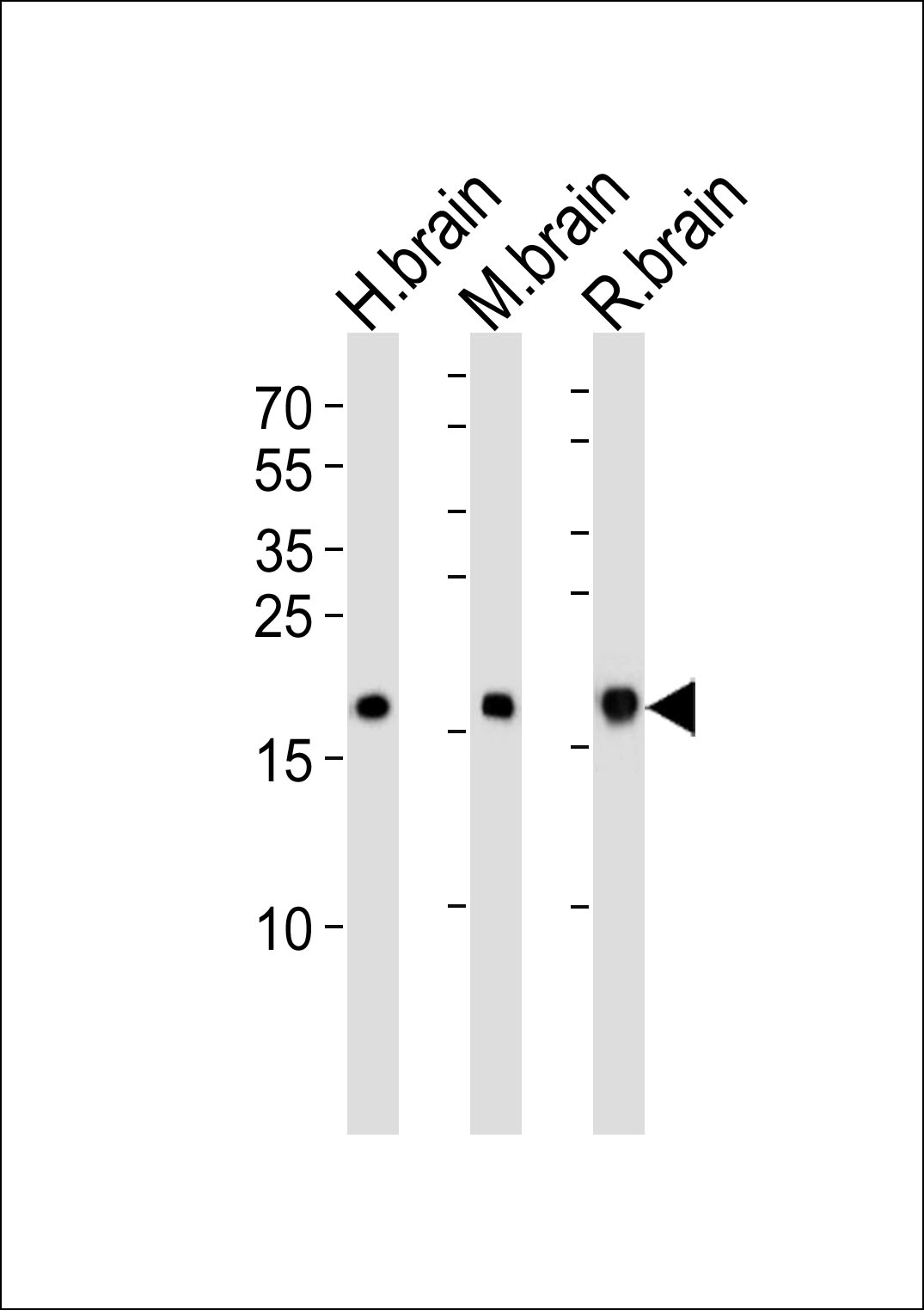VILIP1 Antibody (C-term)
Purified Rabbit Polyclonal Antibody (Pab)
- 产品详情
- 文献引用 : 2
- 实验流程
- 背景知识
Application
| IHC-P, WB, E |
|---|---|
| Primary Accession | P62760 |
| Reactivity | Human, Rat, Mouse |
| Host | Rabbit |
| Clonality | Polyclonal |
| Isotype | Rabbit IgG |
| Calculated MW | 22142 Da |
| Antigen Region | 123-150 aa |
| Gene ID | 7447 |
|---|---|
| Other Names | Visinin-like protein 1, VILIP, VLP-1, Hippocalcin-like protein 3, HLP3, VSNL1, VISL1 |
| Target/Specificity | This VILIP1 antibody is generated from rabbits immunized with a KLH conjugated synthetic peptide between 123-150 amino acids from the C-terminal region of human VILIP1. |
| Dilution | IHC-P~~1:100~500 WB~~1:1000 E~~Use at an assay dependent concentration. |
| Format | Purified monoclonal antibody supplied in PBS with 0.09% (W/V) sodium azide. This antibody is purified through a protein G column, followed by dialysis against PBS. |
| Storage | Maintain refrigerated at 2-8°C for up to 2 weeks. For long term storage store at -20°C in small aliquots to prevent freeze-thaw cycles. |
| Precautions | VILIP1 Antibody (C-term) is for research use only and not for use in diagnostic or therapeutic procedures. |
| Name | VSNL1 |
|---|---|
| Synonyms | VISL1 |
| Function | Regulates (in vitro) the inhibition of rhodopsin phosphorylation in a calcium-dependent manner. |
| Tissue Location | Brain and retina. Neuron-specific in the central and peripheral nervous system. Increased in the cerebrospinal fluid of Alzheimer disease patients (at protein level) |
For Research Use Only. Not For Use In Diagnostic Procedures.

Provided below are standard protocols that you may find useful for product applications.
BACKGROUND
The visinin and visinin-like peptides represent a family of calcium-binding proteins that are highly expressed in the retina. Visinin has been shown to be a cone cell-specific protein with a molecular weight of 24 kDa. Several members of the visinin family of genes have been isolated and characterized from different species. These peptides are believed to be involved in the processes of phototransduction. The recoverin gene (RCV1) is believed to be involved in the pathophysiology of retinopathy in cancer patients.
REFERENCES
Braunewell, K.H., et al., Neuropharmacology 44(6):707-715 (2003). Lin, L., et al., J. Biol. Chem. 277(44):41872-41878 (2002). Spilker, C., et al., J. Neurosci. 22(17):7331-7339 (2002). Bernstein, H.G., et al., Neuroreport 13(4):393-396 (2002). Lin, L., et al., Biochem. Biophys. Res. Commun. 296(4):827-832 (2002).
终于等到您。ABCEPTA(百远生物)抗体产品。
点击下方“我要评价 ”按钮提交您的反馈信息,您的反馈和评价是我们最宝贵的财富之一,
我们将在1-3个工作日内处理您的反馈信息。
如有疑问,联系:0512-88856768 tech-china@abcepta.com.






















 癌症的基本特征包括细胞增殖、血管生成、迁移、凋亡逃避机制和细胞永生等。找到癌症发生过程中这些通路的关键标记物和对应的抗体用于检测至关重要。
癌症的基本特征包括细胞增殖、血管生成、迁移、凋亡逃避机制和细胞永生等。找到癌症发生过程中这些通路的关键标记物和对应的抗体用于检测至关重要。 为您推荐一个泛素化位点预测神器——泛素化分析工具,可以为您的蛋白的泛素化位点作出预测和评分。
为您推荐一个泛素化位点预测神器——泛素化分析工具,可以为您的蛋白的泛素化位点作出预测和评分。 细胞自噬受体图形绘图工具为你的蛋白的细胞受体结合位点作出预测和评分,识别结合到自噬通路中的蛋白是非常重要的,便于让我们理解自噬在正常生理、病理过程中的作用,如发育、细胞分化、神经退化性疾病、压力条件下、感染和癌症。
细胞自噬受体图形绘图工具为你的蛋白的细胞受体结合位点作出预测和评分,识别结合到自噬通路中的蛋白是非常重要的,便于让我们理解自噬在正常生理、病理过程中的作用,如发育、细胞分化、神经退化性疾病、压力条件下、感染和癌症。







